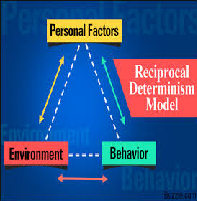Continuous and Reciprocal Processes of Change Order Instructions: The requirement for ongoing, continuous and reciprocal processes of change in the organization must be embraced as a core component of corporate philosophy, and therefore enshrined as a non-negotiable element of organizational culture.

When this ambition is realized, there will be a joint and individual commitment amongst stakeholders to a constant adjustment of their ways of doing things, in pursuit of an improved value proposition for the customer. This is achieved by a combination of effective communication and disciplined implementation and is therefore followed by the generation of quantifiable benefits for all stakeholders involved in the process.
In this essay, you have to reflect on this summary statement and to offer your own opinion on its validity, relevance, and feasibility in the context of your own employment environment. In short, to what extent can this theoretical view translate into effective action in the context of conditions experienced in the practical workplace?
To prepare this essay:
• Read the Required Learning Resources which sent by email.
• Reflect on the ideas presented in the Week 8 Key Concept Overview and the assigned journal articles in the light of your own practical experiences in the workplace.
• With reference to the summarised statement above, to what extent do you believe the propositions contained in this statement are important, valid, relevant and achievable in practice, given the real-world conditions that have been encountered in your own experience?
Continuous and Reciprocal Processes of Change Sample Answer
TO THE BACK FUTURE
Globalization and emergence of technology have driven firms to change their business process to keep up with the changing market and consumer needs. To maintain profitability and remain relevant, it is impeccable for managers to update the firm’s strategies. Successful implementation of the strategic process is only possible if stakeholders are aware of and committed to the change initiatives. Thus, the adaptation of a change-oriented organizational culture should be upheld by all firms to ensure that sustainability and growth prospects are assured.
Though resistance and challenges to the change process are unavoidable, application of strategic communication approaches can help implementers of change program to address issues and assure other stakeholders that the implementation is viable and the change is profitable (Collinson 2015). For instance, implementers should explain to employees the advantages of implementation of the change process such as the increase in market share. On the other hand, if the change is not implemented, the company can lose market share which can lead to a reduction in salaries and layoffs. As such, employees become actively involved and even give opinions on how the implementation process should be handled to ensure that is successful. Managers should be proactively involved before and after the implementation of the changes instead of the usual practices in the current workplaces whereby its only during planning and start of implementation that managers are involved then leave out the process to be handled by other stakeholders (Hind et al. 2013).
Traditionally, implementers of change have been the leading departments and not all stakeholders. To make change a continuous process, Patricia et al. suggest the involvement of human resources function in managing the change process by first improving the skillsets of the departmental staff. When one department is given the task of establishing change, it becomes easier for implementers to integrate all other functions, resources, and stakeholder of the firm. Having HRM department manage the change process, stakeholders will perceive the change as a chance to develop an organization which is essential in establishing a continuous change process. Thus, instituting an organizational culture of learning and development does not necessarily help in change implementation but continuously sustaining the change.
The reason that firms in current working establishments have failed to implement change is coming up with strategies that are not fruitful, no clarity on the implementation process, implementers failure to engage stakeholders in designing the strategies, implementers not going forward with the change process once it is initiated, and focusing on the change process such that other business processes end up collapsing (Martin and Diarmind 2011). If these issues are put into perspective before and after initiating the change process, firms can be successful in implementing changes thus motivating employees and other stakeholders advocate for new projects, processes, and systems. As a result, stakeholders change their traditional way of thinking and adapt the change processes to their day to day operations thus translating to a new organizational culture.
It is possible to establish an organizational culture that focuses on strategic change if all stakeholders are involved in the design and implementation of changes. When implementers clarify the changes and how they are going to affect each stakeholder and also address resistance and challenges attributable to the changes before commencing implementation, success is highly probable. In current working conditions, firms employ dictatorship form of leadership and assume that all stakeholders will adapt to changes without much explanation. Through the application of strategic communication approaches, the involvement of stakeholders, and assurance of change implementation, the continuous organizational change process is valid.
Continuous and Reciprocal Processes of Change References
Collinson, G, 2015, An Approach to Planning, Initiating, and Managing Change.
Hind, P., Smit, A. & Page, 2013, ‘Enabling sustainability through an action research process of organizational development,’ Journal of Corporate Citizenship, 49, pp.138-161.
Kingen, R. & Wilkerson, P, 2011,‘The seven deadly sins of strategic change,’ Global Business and Organizational Excellence, 30 (2), pp.44-52.
Martin, C., and Diamird, C, 2011, The seven deadly sins of strategy implementation.
Patricia, Arnold, and Nadine, 2013, Enabling Sustainability through an Action Research Process of Organizational Development, Ashridge Business School
Steenkamp, K., Botha, G. &Moloi, K.C, 2012, ‘Sustaining change in a learning organization,’ Africa Education Review, 9 (2), pp.380-394.




